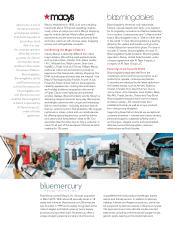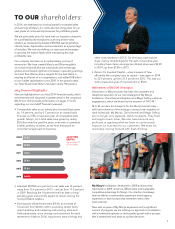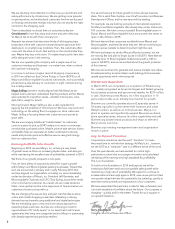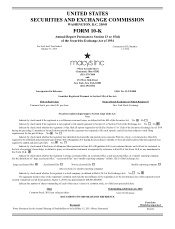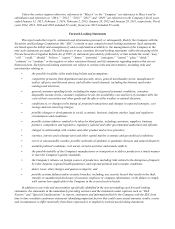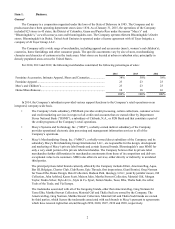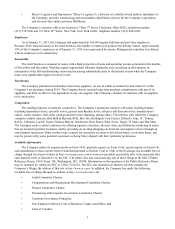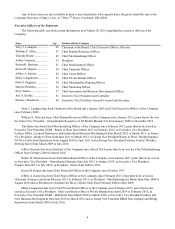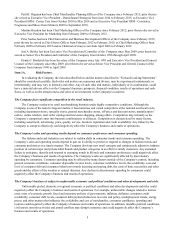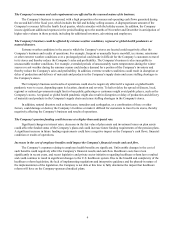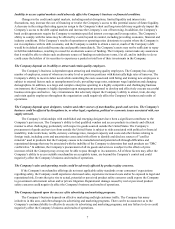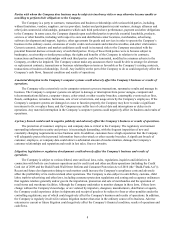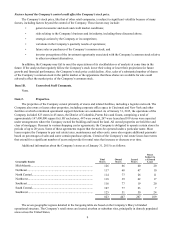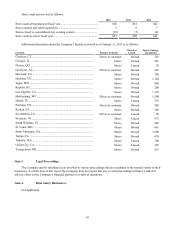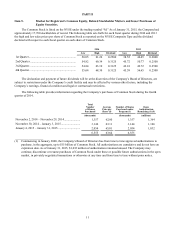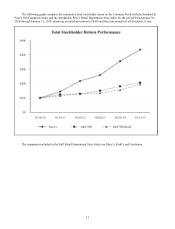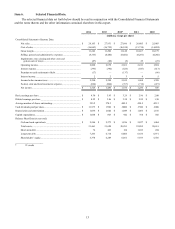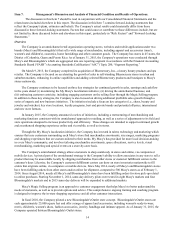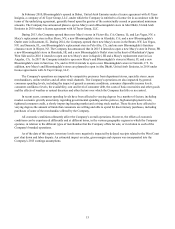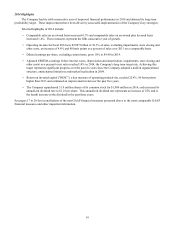Macy's 2014 Annual Report Download - page 11
Download and view the complete annual report
Please find page 11 of the 2014 Macy's annual report below. You can navigate through the pages in the report by either clicking on the pages listed below, or by using the keyword search tool below to find specific information within the annual report.6
The Company’s revenues and cash requirements are affected by the seasonal nature of its business.
The Company’s business is seasonal, with a high proportion of revenues and operating cash flows generated during
the second half of the fiscal year, which includes the fall and holiday selling seasons. A disproportionate amount of the
Company's revenues fall in the fourth fiscal quarter, which coincides with the holiday season. In addition, the Company
incurs significant additional expenses in the period leading up to the months of November and December in anticipation of
higher sales volume in those periods, including for additional inventory, advertising and employees.
The Company’s business could be affected by extreme weather conditions, regional or global health pandemics or
natural disasters.
Extreme weather conditions in the areas in which the Company’s stores are located could negatively affect the
Company’s business and results of operations. For example, frequent or unusually heavy snowfall, ice storms, rainstorms
or other extreme weather conditions over a prolonged period could make it difficult for the Company’s customers to travel
to its stores and thereby reduce the Company’s sales and profitability. The Company’s business is also susceptible to
unseasonable weather conditions. For example, extended periods of unseasonably warm temperatures during the winter
season or cool weather during the summer season could reduce demand for a portion of the Company’s inventory and
thereby reduce the Company's sales and profitability. In addition, extreme weather conditions could result in disruption or
delay of production and delivery of materials and products in the Company's supply chain and cause staffing shortages in
the Company's stores.
The Company's business and results of operations could also be negatively affected if a regional or global health
pandemic were to occur, depending upon its location, duration and severity. To halt or delay the spread of disease, local,
regional or national governments might limit or ban public gatherings or customers might avoid public places, such as the
Company's stores. A regional or global health pandemic might also result in disruption or delay of production and delivery
of materials and products in the Company's supply chain and cause staffing shortages in the Company's stores.
In addition, natural disasters such as hurricanes, tornadoes and earthquakes, or a combination of these or other
factors, could damage or destroy the Company’s facilities or make it difficult for customers to travel to its stores, thereby
negatively affecting the Company’s business and results of operations.
The Company’s pension funding could increase at a higher than anticipated rate.
Significant changes in interest rates, decreases in the fair value of plan assets and investment losses on plan assets
could affect the funded status of the Company’s plans and could increase future funding requirements of the pension plans.
A significant increase in future funding requirements could have a negative impact on the Company’s cash flows, financial
condition or results of operations.
Increases in the cost of employee benefits could impact the Company’s financial results and cash flow.
The Company’s expenses relating to employee health benefits are significant. Unfavorable changes in the cost of
such benefits could negatively affect the Company’s financial results and cash flow. Healthcare costs have risen
significantly in recent years, and recent legislative and private sector initiatives regarding healthcare reform have resulted
and could continue to result in significant changes to the U.S. healthcare system. Due to the breadth and complexity of the
healthcare reform legislation, the lack of implementing regulations and interpretive guidance and the phased-in nature of
the implementation of the legislation, the Company is not able at this time to fully determine the impact that healthcare
reform will have on the Company-sponsored medical plans.


